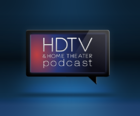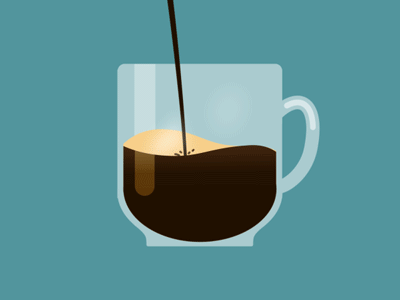 Jan 27
Jan 27 Podcast #776: Whole House Music with Chromecast Audio and Grace Digital CastDock X2
 Podcast,
Podcast,  Review Tags:
Review Tags:  Audio,
Audio,  Chromecast,
Chromecast,  Music,
Music,  Streaming,
Streaming,  Whole House
Whole House  We’ve been on a quest for DIY whole house music for nearly a decade. Going all the way back to the Squeezebox from Slim Devices. We even tried a digital media player with a built in FM broadcaster we could pick up on our old school radios throughout the home. Over time, Braden settled in on Sonos while Ara landed on an Airport Express solution. There are other options, though, so we decided to check out what Chromecast Audio from Google can do.
We’ve been on a quest for DIY whole house music for nearly a decade. Going all the way back to the Squeezebox from Slim Devices. We even tried a digital media player with a built in FM broadcaster we could pick up on our old school radios throughout the home. Over time, Braden settled in on Sonos while Ara landed on an Airport Express solution. There are other options, though, so we decided to check out what Chromecast Audio from Google can do.
| Download this Episode. |
Support the show with Patreon!
Listen to the show
Today's Show:
News:
- HDMI 2.1 To Bring Robust Home Theater Experience
- Millennials prefer broadband, streaming
- Comcast Sports Net to Live Stream MLB – But Not For Cord-Cutters
Other:
- Get your essential oils on at oilsfullofgrace.com
- Amazon pushes Star Trek future with new Alexa wake word
Amazon Prime:
Sign up for Amazon Prime and enjoy:
- Free Two Day Shipping!
- Instant Streaming of TV Shows and Movies
- Instant Access to thousands of Kindle Books
- The HT Guys gratitude!
We’ve been on a quest for DIY whole house music for nearly a decade. Going all the way back to the Squeezebox from Slim Devices. We even tried a digital media player with a built in FM broadcaster we could pick up on our old school radios throughout the home. Over time, Braden settled in on Sonos while Ara landed on an Airport Express solution. There are other options, though, so we decided to check out what Chromecast Audio from Google can do. The Chromecast technology, sometimes referred to as Google Cast technology, allows you to send audio or video from your computer, tablet or smartphone to a compatible playback device. The original Chromecast was primarily intended for video. You’d plug it into your TV, instantly turning it into a smart TV you could send content to from your other smart devices. For example, watch YouTube from your YouTube app on your phone on your big, beautiful HDTV. It was, and is, a very cost effective way to turn an otherwise “dumb” TV into a smart TV. Then Google came out with the Chromecast Audio. It does just what you’d think, it drops the video part and just plays the audio you send to it from your personal device. Sure you can listen to YouTube on a Chromecast Audio, but it’s intended more for the pure listening apps like Spotify, Pandora, Google Play Music or iHeartRadio. There are a lot of benefits to it, the first being the price. You can’t get it on Amazon, because they sell competing products, maybe not competing with the Chromecast Audio directly, but certainly competing with the full Chromecast device. So if you want one, you can get it from Google for only $35. But keep your eyes open, because they do go on sale from time to time. If you were to pick one up, you’d be surprised at how diminutive it is. The Chromecast Audio itself is about the size of an Oreo cookie. It has two ports, one on either side. One is a micro USB port for power, the other is a 3.5 mm audio jack for connecting it to whatever audio device you want to use to play the music. You can plug it into any powered speakers or any audio device in your listening room like a receiver, processor or amplifier. It comes with the micro USB cable and plug adapter to power it, along with a really short 3.5 mm cable to connect it to your speakers. If you have a pair of powered speakers you can connect the Chromecast Audio to, then you’re set. That’s all you need. And if you like the look of them enough to put them on display in your kitchen, living room, family room, den, etc. you’re golden. You can add whole house audio zones for $35 a pop. Not a bad deal. But what if you don’t have the speakers on hand? That’s where the CastDock X2 from Grace Digital comes in. It is an all-in-one, 2.1 speaker with a built-in dock for your Chromecast Audio, turning the Chromecast Audio into a standalone audio device you can add as a playback zone to any room in your home. The suggested price is $150, but they’re at Amazon right now for $95. The CastDock X2 itself looks very similar to a Sonos Play:1 speaker. It is slightly larger, but also feels a little lighter. But don’t let the weight fool you. It packs in a digital 50 watt class D amplifier that can move plenty of sound, but we’ll cover performance in just a bit. It has a “lid” of sorts that easily pops off revealing the dock for the chromecast audio. On one side of the dock is the micro USB cable to provide power. On the other side is a digital fiber optical connection to support 24-bit, 192-khz lossless sound from your Chromecast Audio. Setting the whole thing up really is very, very simple. If you’re using the CastDock X2 with your Chromecast Audio, you simply pop off the top, plug in both connectors, replace the top, then plug the CastDock X2 into power and you’re ready to go. If you decide not to use the CastDock X2, setup is still every bit as simple. You just use the two cables that come with the Chromecast Audio instead: one for power and the other goes into your powered speakers. Once you’ve then plugged your powered speakers into the wall, you’ve got yourself a new audio zone, provisioned and ready to start blasting some tunes. After the physical setup is complete, everything transitions over to your smart device or your computer. On your smartphone or tablet, you need to add the Google Home app to control the Chromecast Audio devices in your house. The Google Home app will connect to the Chromecast Audio device and allow you to: add it to your Wifi, give it a custom name like Kitchen or Family Room, and put it into a group if you have multiple Chromecast Audio devices throughout your home. You can create groups like Downstairs, Upstairs, or add all of them into one big group called Whole House. It’s totally up to you. If you’re going the Chromecast Audio plus Grace Digital CastDock X2 route, every new whole house audio zone is going to set you back a mere $130. Compare that with the Sonos Play:1 at $200, or pretty much any other whole house audio solution that will cost significantly more. If you want to upgrade the audio in any particular room or zone, the sky truly is the limit. The Chromecast Audio supports 24-bit/96KHz audio so you can connect it to any speakers you want. Use the Audioengine HD3 powered bookshelf speakers from last week’s show and turn any room into an audiophile whole house listening room for, honestly, not too much money. Unlike the Sonos system, there isn’t a dedicated app to control all your Chromecast Audio devices and what is playing on them. Instead, when you add the Google Home app to your phone or tablet, it adds the ability to send audio from your supported apps to any of your Chromecasts, much like you would with Bluetooth speakers or headphones. So the Google Home app controls the devices themselves, but all your other apps control the content. You can also use the Google Home app to create groups of devices, and those groups show up just like the other devices as sources you can cast to. All of that: from adding devices, to grouping devices, to casting to individual or groups of devices, worked flawlessly for us. Audio sync for multi-zone playback was perfect. In our case, performance wasn’t just about the Chromecast, it was also about the CastDock X2. Luckily we ordered and setup two of them at the same time. This helped us test multi-zone capabilities, but also let us hear two CastDocks as well. The first one we opened was pretty stellar. Friends in the room commented on how good it sounded. Braden’s boys said that they should ditch Sonos and move to Chromecast instead. The sound filled the room. High end was crystal clear, the bass was tight. The speaker was perfect for a single zone, 2.1 speaker for whole house audio. But then we opened and installed the second one. Talk about a tale of two speaker cities, it was like night and day. The second CastDock was miserable. No high end, the bass washed everything out, it was mushy. The audio was pretty bad. Had we opened them in reverse order, this review would have been totally different. But we knew how good the CastDock could sound after the first one, so we pressed on. We reached out to Grace Digital support. They told us, in essence, to return the bad one and try again. We now have four and they’re all really good. If you see bad reviews on Amazon, they may have gotten bum units like our second one. We really aren’t sure what the percentage of bum units to good ones is, but if you get a good one, you’ll know. And the opposite is also true. If you, like us, are on a quest for perfect whole house audio that you can do yourself, yes, Sonos and Airport Express are great options. But now we know that Chromecast Audio is as well. And probably more cost effective. Beyond the Oreo Cookie Chromecast Audio with a CastDock X2, since the Google Cast platform is open, there are a ton of companies that make speakers and soundbars with Google Cast built in. They tend to be a bit more expensive per zone, but you have so many options if you go the Chromecast route. At that point, you become that kid in the candy store and can really geek out.Whole House Music with Chromecast Audio and Grace Digital CastDock X2
About Chromecast Audio
About Grace Digital CastDock X2
Setup
Performance
Conclusion


Reader Comments (2)
Awesome segment on the Chromecast Audio, guys! It really made me feel that the Chromecast Audio has "come of age" and is worthy of an audio enthusiasts consideration. I am interested in your opinion, however, of the Chromecast Audio's ability to play local content. With my Sonos system it is able to look at my network share with all my audio (without having to run a special "server" application on my PC) and update its "library" for easy playback. I wrote an article about this last year with one method but it is my hope that there is or soon will be a more automated method that doesn't require a technical aptitude.
Hi guys, running a bit behind, but finally got to listen to last week's episode. I really enjoyed the Chromecast Audio segment. And too funny, I also recently got a Grace Digital CastDock to compare against the Sonos Play 1. Your comment about the sound quality difference between the CastDocks you got has me wondering, though. Comparing the CastDock and the Play 1 back to back, my CastDock seems to lack the richness of sound that the Sonos has. Not that it sounds bad, but it just doesn't seem to be quite up to par on either the low end or high end. I just chalked it up to a slightly different sound, but now I'm wondering if maybe I got a bad unit. Do you have a Play 1 that you can compare against the CastDock?
I really like the Chromecast Audios in general; the cost can't be beat (and as you guys mentioned, they're often on sale; I don't think I paid full price for any of mine.) However, I have one issue; for me, the multiroom grouping UX falls short of Sonos. On the Sonos, grouping is dynamic whereas with the CAs the grouping is static. Also on the Sonos side, grouping is "subtractive" - that is, if you group speakers together in a multiroom setup, it reduces the number of apparent speakers in the device list. However, with the Chromecasts, grouping is additive, so if you create multizone groups, those show up as additional Chromecast Audio "devices". If you only have a few zones and/or simple grouping (e.g. just individual CAs and "whole home") then it's no big deal. But if you have several devices (easy to happen with the low cost), and several possible ways of combining them (e.g. "whole home", "kitchen + dining room", "kitchen + dining room + living room", etc.) then these need to be predefined, and the Chromecast Audio device list can quickly become unwieldy.
This leads to additional issues. For example, if music is playing on a single speaker in a Sonos environment, and you want to switch to playing multiroom, you can just group the speakers together dynamically and they'll start playing seamlessly with no interruption. With the Chromecast Audios, you have to stop casting to the individual speaker and then start casting to the particular multiroom group you want to use. Also with Sonos, it's easy to see which speakers are currently in use. With the Chromecast Audios, this isn't apparent and it becomes a particular issue if you have multiple family members or housemates and overlapping groups where one or more devices are in different groups. It's easy for someone to accidentally interrupt someone else's music by selecting the wrong device/group.
Oh, one last thing. I think it was Braden who commented that he preferred the way the Chromecast Audios were controlled via the specific streaming apps (e.g. Google Play Music) rather than having to use the Sonos app. Sonos has introduced an API to allow direct control from apps without having to use the Sonos app. So far Spotify is the only one that supports it, I think, but hopefully more will be coming.